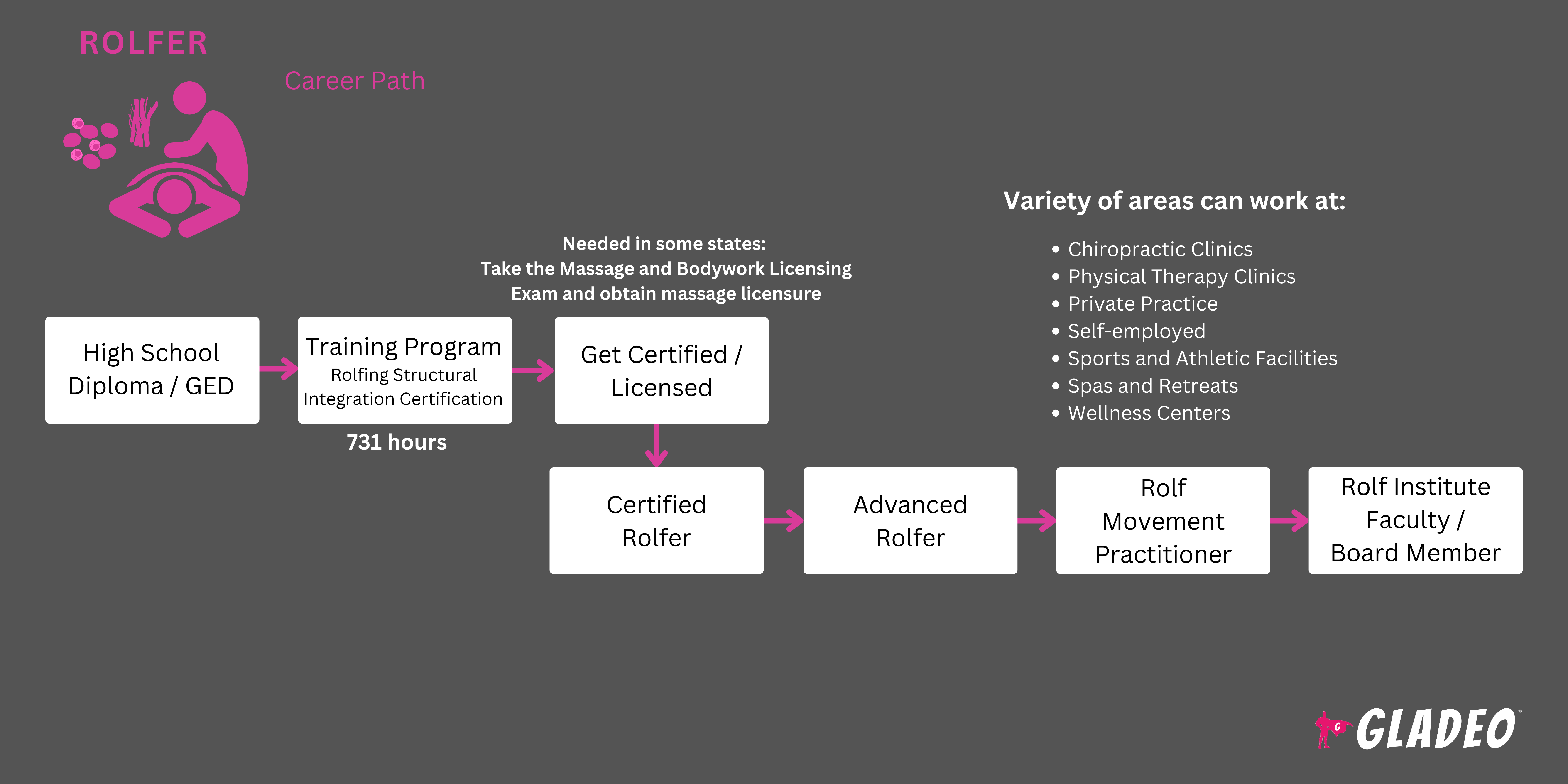Spotlights
Massage Therapist, Physical Therapist, Chiropractor, Myofascial Release Therapist, Craniosacral Therapist
Ever wonder what holds our muscles, bones, nerves, and organs in place? Under our skin and running throughout our bodies are layers of web-like connective tissue called fascia. This network of fascia provides the structural support that allows the different parts of our bodies to function as an integrated whole.
Because fascia is interconnected, any injuries or restrictions in one area can affect other areas of our bodies. This can lead to symptoms like pain, tightness, tension, and poor posture. There are several ways to address such symptoms, ranging from stretching and massage to physical therapy, pain medications, and even surgery. One of the lesser-known options is to visit a Rolfer!
Rolfers practice a form of deep tissue bodywork called Rolfing Structural Integration that manipulates fascia to correct physical misalignments, restore elasticity, and free the body from discomfort. Outwardly, the treatments look similar to massage therapy, but Rolfing has a broader focus that goes beyond muscle relaxation and stress relief.
Named after the biochemist Dr. Ida Rolf, Rolfing has grown in popularity since its founding in 1971. Since then, various offshoot systems have developed – but the only place in the U.S. to train and become certified in the original holistic Rolfing method is at the Dr. Ida Rolf Institute (DIRI) in Colorado!
- Reducing clients’ pain and helping them achieve better posture and mobility
- Improving clients’ overall quality of life, particularly for those with chronic discomfort
- Collaborating with clients on long-term wellness and body awareness
- Potentially lucrative pay, with average earnings of $130–$160 per hour
"Making a difference in people's lives through feeling better in their bodies. For some people, this is relief from long-term (chronic) pain. For others, it enhances confidence in their posture and body image. Helping a diverse population of people with who they are and how they use their bodies is extremely rewarding!" - Matthew Hartman, Rolfer at Structural Integration Bodywork
Lịch làm việc
- Rolfers typically work full-time, which may include 4 to 6 hours a day providing direct manual therapy to clients. Many Rolfers are self-employed or work in holistic health centers, spas, or private practices. Those who run their own business also spend time managing business-related activities.
Nhiệm vụ tiêu biểu
- Schedule an initial session with a client. Discuss their symptoms and assess their body’s physical alignment.
- Identify and target areas of chronic pain, restricted movement, or injury.
- Customize a plan to help alleviate the client’s symptoms and correct their posture.
- Explain what the client should expect during their sessions.
- Note, Rolfers usually suggest clients complete a 10-session course of treatment, with routine maintenance sessions, as needed.
- Discuss possible contraindications, if any. For example, a Rolfer may need to take extra care around any bodily area that has been surgically operated on.
- Perform hands-on manual therapy to manipulate the body’s fascia. Monitor the client’s reactions to the therapy as it is being done. Encourage open communication and feedback.
- Assess the client’s posture and mobility after each session.
Offer recommendations for post-session care, such as hydration, rest, or specific activities to avoid. - Educate the client on body mechanics, movement patterns, and ways to maintain improvements between sessions, such as exercises and stretching.
- Book follow-up sessions, timed according to the client’s treatment plan.
- Keep notes, listen to client feedback, and monitor progress.
- Make adjustments to treatment plans as necessary.
Trách nhiệm bổ sung
- Maintain a sanitary, calming treatment environment. Keep massage tables clean and in good condition.
- Help clients feel at ease during their sessions. Provide motivational support to clients working through physical discomfort.
- Follow local and national guidelines for bodywork practices.
- Keep up-to-date with new developments. Take continuous learning courses on anatomy, biomechanics, and Rolfing techniques, if beneficial for expanding one’s knowledge in the career field.
- For those running their own business:
- Obtain a business license and lease a suitable workspace.
- Set up a relaxing, private workspace free from distractions and outside noises.
- Brand and advertise the business. Establish the business’s online presence via a website, Google Business profile, social media, and other suitable platforms.
- Stay compliant with health advertising standards. Avoid making medical claims related to the services offered. Consider describing services in terms of benefits like improved posture, increased range of motion, and enhanced body awareness.
- Collaborate with chiropractors, physical therapists, and wellness practitioners for referrals to build a client base.
- Develop an efficient way for clients to book appointments and make payments.
- Develop and maintain good client relations for repeat business.
Implement client retention methods, such as follow-up emails, personalized treatment updates, loyalty programs, or post-treatment check-ins. - Order supplies, such as massage oils, towels, sanitizer, aromatherapy candles, or other items for the workspace.
- Obtain insurance for liability, professional indemnity, and property coverage.
- Track income and expenses. Submit state and federal taxes.
Kỹ năng mềm
- Phân tích
- Chú ý đến chi tiết
- Truyền thông
- Phối hợp
- Quyết định
- Cảm
- Kỹ năng giao tiếp
- Kỹ năng tạo động lực
- Giải quyết vấn đề
- Quản lý thời gian
Kỹ năng kỹ thuật
- Strong understanding of anatomy, physiology, and biomechanics.
- Knowledge of Rolfing techniques and principles of fascia manipulation.
- Ability to assess and correct postural imbalances.
- Proficiency in observing movement patterns and physical alignment.
- Familiarity with holistic health practices and complementary therapies.
- Understanding of chronic pain management.
- Record-keeping and documentation skills.
- Dexterity, strength, and stamina.
- Tự làm chủ
- Spas and wellness centers
- Hành nghề tư nhân
- Rehabilitation facilities
- Sports medicine clinics
Rolfers often work with clients suffering from chronic pain or mobility issues, so the job requires a good amount of empathy and patience. In addition, Rolfing is physically demanding work, so Rolfers must develop and maintain their strength and stamina to do the job well.
Those who are self-employed have to manage business-related tasks such as maintaining a suitable workspace, advertising, scheduling appointments, taking payments, keeping financial records, and paying taxes. It can be tough to find enough clients in the beginning, so Rolfers have to stick with it and market their services effectively.
Recent trends in Rolfing highlight its growing role in complementary therapy, particularly for chronic pain and mobility issues. For example, research indicates that Rolfing may support improvements in chronic low back pain management and motor function for spastic cerebral palsy.
Additionally, Rolfing shows promise for managing fibromyalgia, with studies noting reductions in pain, anxiety, and depression months after being treated. This highlights Rolfing’s potential as a long-term support mechanism for managing symptoms.
"There has been a tremendous amount of research into fascia in the last 15 years – a lot of new information since I trained in Rolfing 21 years ago!
I like to keep up with this research so I am educated and may properly educate my clients. Fascia is the primary tissue (along with muscles, tendons, ligaments, and viscera) we work with in Rolfing.
Dr. Ida P. Rolf (founder of Rolfing) believed in the 1940s that fascia was “the unforeseen force in human health.” Since then, we now have so much additional research-backed information on fascia’s role in movement, neurological communication, and psycho-emotional phenomena." - Matthew Hartman, Rolfer at Structural Integration Bodywork
Rolfers may have enjoyed activities like yoga, dance, or sports that emphasize body awareness. They likely had an early interest in massage or physical therapy, plus a passion for helping others.
"My days are quite simple really. I generally work from 9-5, five days a week. I see a client every hour for about an hour. Before each day, I spend 30 minutes reviewing each client’s notes from their previous appointments so I am prepared for each session.
Hygiene is very important in my work, so I must wash my hands in between each session and have clean sheets, pillowcases, and blankets ready for each session." - Matthew Hartman, Rolfer at Structural Integration Bodywork
- In the United States, students can receive training via the Rolfing® Structural Integration (RSI) Certification program at the Dr. Ida Rolf Institute (DIRI) in Boulder, Colorado.
- There are also authorized international Rolfing schools in Canada, Brazil, Germany, and Japan.
- DIRI’s RSI program lasts 28 weeks, which includes three phases plus breaks between each phase. In total, the RSI training covers 731 hours of study, with courses on anatomy, physiology, and kinesiology, along with hands-on Rolfing techniques and supervised practice.
- Some states require Rolfers to be licensed the same way as massage therapists. In such cases, Rolfers may need to pass the Massage and Bodywork Licensing Examination (MBLEx)https://fsmtb.org/mblex/. Requirements for the MBLEx may include:
- Being at least 18 years old
- Passing the exam
- Completing a minimum number of hours of massage therapy education from an approved or accredited program (such as the RSI training provided at DIRI).
- Students may also opt to attend DIRI’s Rolf Movement® Integration (RMI) Certification and the Advanced Rolfing® Certification program.
- Continuing Education courses are also offered to aid in professional development.
- Rolfers do not need a university degree. In the United States, the Dr. Ida Rolf Institute (DIRI) in Boulder, Colorado is the only approved training site that features the Rolfing® Structural Integration (RSI) Certification program.
- Note, the International Association of Structural Integrators features alternative programs similar to and in some cases derivative of Rolfing practices. They just can’t use the trademarked “Rolf” branding!
- DIRI offers a path for non-DIRI Structural Integration practitioners to become DIRI members.
- Rolfing students may wish to study kinesiology, exercise science, massage, or related topics prior to attending DIRI. There are plenty of community colleges and massage schools to take such classes. Some courses can be taken online, but many require practical in-person experience.
- Compare tuition and fees costs, noting in-state vs. out-of-state costs. Note, DIRI is a Non-College Degree (NCD) School.
- Review scholarship and financial aid options. If applying for federal aid Pell Grants, make sure the money can be used to pay the tuition at your particular school of interest.
- The Dr. Ida Rolf Institute (DIRI) in Boulder, Colorado offers a 28-week Rolfing® Structural Integration (RSI) Certification program.
- Inspired by Rolfing is the practice of Structural Integration, which can be studied through programs approved by the International Association of Structural Integrators (IASI).
- The IASI represents a broad field of Structural Integration practitioners, including those trained in Rolfing and related modalities such as:
- Anatomy Trains Structural Integration
- Hellerwork Structural Integration
- Kinesis Myofascial Integration
- SOMA Neuromuscular Integration
- Core Structural Integration
- Students who graduate from an IASI program may take the Certification Exam for Structural Integration.
- Take high school classes in biology, anatomy, and physical education to build a foundation in body mechanics.
- Playing sports, engaging in regular exercise, or practicing yoga or Pilates can be beneficial because they offer first-hand knowledge of kinesiology principles related to human movement.
- Volunteer or work part-time in wellness centers, spas, or massage therapy businesses.
- Explore bodywork techniques through workshops or online courses in areas like massage therapy or movement education.
- Network with other bodywork practitioners. Join holistic health associations or student clubs related to health and wellness.
- Watch YouTube videos about Rolfing, massage, kinesiotherapy, and physical therapy.
- Read studies and articles about Rolfing, and participate in discussion forums like Reddit.com/r/Rolfing/.
- Subscribe to DIRI’s journal Structure, Function, Integration.
"Establish good communication and people skills! So much of my practice is working with people individually. In doing so, I must navigate a lot of different aspects of a person: physical, psychological, life circumstances, family dynamics, medical history, past traumatic events, and so on.
Effective communication and human relating skills help me hold space for all parts of every client. Additionally, general sciences and anatomy and physiology are helpful subjects. Taking an amateur massage class at a local community college is a good idea to introduce the concept of touch." - Matthew Hartman, Rolfer at Structural Integration Bodywork

- Many Rolfers start their own business, but even they might want to get some job experience with an employer first!
- Complete your Rolfing certification and any specific state requirements, such as a massage license.
- Review job ads on sites like Indeed, Monster, and Glassdoor.
- Highlight keywords and skills on your resume such as:
- Body alignment correction
- Client postural assessment
- Connective tissue health
- Fascial manipulation
- Functional movement optimization
- Manual therapy
- Pain management techniques
- Soft tissue mobilization
- Structural Integration
- Review massage resume templates and common interview questions. Practice mock interviews with a friend.
- Ask people in your professional network for tips about job openings.
- Request recommendation letters from previous supervisors or professors. Get their permission before giving out their contact information!
- Dress professionally for job interviews.
- If you work for an employer, let your supervisor know you’re interested in advancing your career.
- Develop strong client relationships, provide excellent service, and pay close attention to feedback.
- Keep up with Rolfing Continuing Education coursework.
- Promote your professional services on social media and consider starting a YouTube channel.
- Stay updated with research on biomechanics, movement therapy, and somatic practices.
- Offer workshops, classes, or seminars on body alignment and posture correction.
- Be an active participant in professional organizations such as the Fascia Research Society.
- Consider relocating if necessary to advance your career. Some towns and cities have more opportunities than others.
- Per NiceRx, the top states using alternative medicines and therapies are Hawaii, California, Washington, Oregon, and Colorado.
- Launch your own business and consider hiring or partnering with other professionals in the wellness industry.
Trang web
- Association of Bodywork & Massage Professionals
- Dr. Ida Rolf Institute (formerly the Rolf Institute of Structural Integration)
- Fascia Research Guide
- Fascia Research Society
- International Association of Structural Integrators
- Massage Therapy Journal
- Rolf Research Foundation
- Structure, Function, Integration
- The International Somatic Movement Education Therapy Association
Sách vở
- Anatomy Trains Myofascial Meridians Structure and Function Study Guide, by Thomas Myers
- Rolfing and Physical Reality, by Ida P. Rolf
- The Endless Web: Fascial Anatomy and Physical Reality, by Louis Schultz
Rolfers are important but often under-recognized members of the health and wellness community. Because many people aren’t familiar with Rolfing, it can be difficult to find enough clients in certain geographic areas, especially in the early stages of one’s career.
If you’re interested in exploring other options, check out our list below for some alternative professions!
- Huấn luyện viên thể thao
- Bác sĩ nắn xương
- Nhà sinh lý học tập thể dục
- Fitness Trainer
- Health Coach
- Chuyên gia trị liệu xoa bóp
- Giám đốc Dịch vụ Y tế và Sức khỏe
- Nhà trị liệu nghề nghiệp
- Huấn luyện viên cá nhân
- Vật lý trị liệu
- Trợ lý vật lý trị liệu
- Pilates Instructor
- Rehabilitation Specialist
- Sports Medicine Physician
- Yoga Instructor
"If you are interested in Rolfing, I highly recommend receiving the Rolfing 10 Series from a Certified Rolfer. The 10 Series is the foundation of Ida Rolf’s theories and principles and can be a very transformative process.
Reach out to a Rolfer you may find in your area through the Dr. Ida Rolf Institute (www.rolf.org). If you decide to train to be a Rolfer, I recommend finding an experienced Rolfer who can mentor you for a few years after training." - Matthew Hartman, Rolfer at Structural Integration Bodywork
Nguồn cấp tin tức

Việc làm nổi bật

Các khóa học và công cụ trực tuyến







